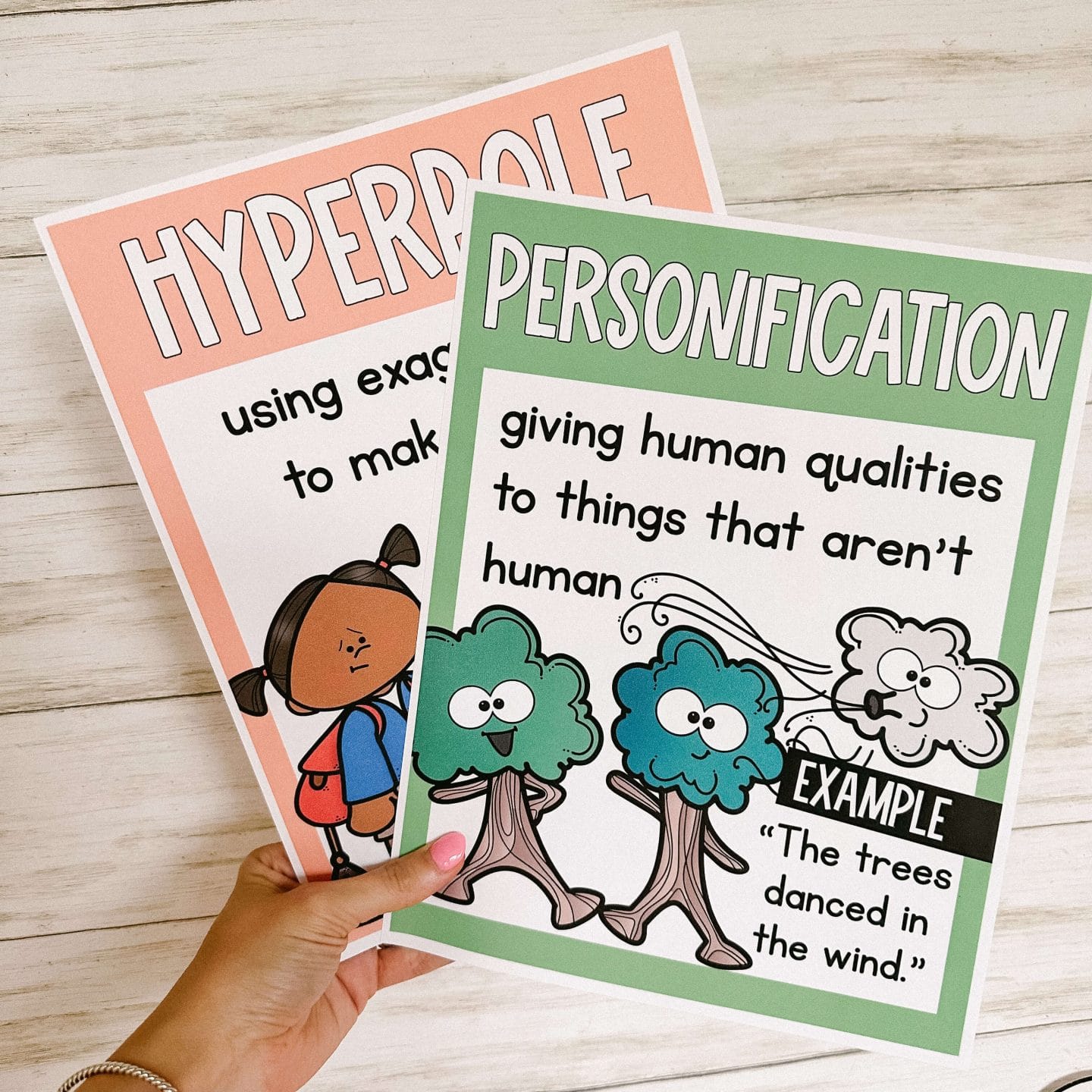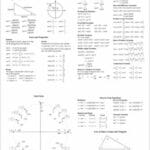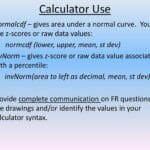This guide provides everything you need to know about using anchor charts to teach figurative language, transforming your students into literary masters! From crafting DIY charts to leveraging digital resources, we’ll cover it all. Explore interactive activities and align your lessons with key standards. Whether you’re a seasoned educator or just starting out, this comprehensive guide will equip you to boost literacy and inspire a love of language in your students.
Engaging with Figurative Language Anchor Charts
Figurative language can initially feel like a complex code, but anchor charts provide a visual key to unlock its magic. These charts act as visual aids, simplifying concepts like similes and metaphors. They also offer interactive opportunities to engage students and foster a deeper understanding of how language works.
Why Anchor Charts Work
Terms like “onomatopoeia” can be intimidating. A well-designed anchor chart transforms abstract ideas into something tangible and connects with students, particularly visual learners. Creating charts collaboratively can further enhance comprehension and empower students to take ownership of their learning.
A good figurative language anchor chart probably includes the following:
| Figurative Language | Description | Example |
|---|---|---|
| Simile | Comparing two things using “like” or “as” | The classroom was as quiet as a mouse. |
| Metaphor | Comparing two things without using “like” or “as” | The snow is a white blanket. |
| Personification | Giving human qualities to non-human things | The wind whispered through the trees. |
| Hyperbole | An extreme exaggeration | I’m so hungry I could eat a horse! |
| Alliteration | Repetition of consonant sounds at the beginning of words | Peter Piper picked a peck of pickled peppers. |
| Onomatopoeia | Words that imitate sounds | Buzz, hiss, pop |
| Idiom | A phrase that means something different from the literal meaning of the words | It’s raining cats and dogs. |
| Symbolism | Using an object or action to represent an idea or feeling | A dove represents peace. |
Crafting Effective Anchor Charts
- Simplicity: Use clear, student-friendly language, avoiding jargon.
- Visual Appeal: Bright colors, engaging fonts, and illustrations capture attention.
- Interactivity: Encourage student brainstorming, drawing, and acting out examples.
- Organization: Headings, bullet points, and visual cues aid navigation.
- Examples: Provide multiple, engaging examples for each type of figurative language.
Deep Dive into Anchor Chart Strategies
Anchor charts are more than just posters; they’re dynamic tools that illuminate figurative language. A clear definition paired with a vivid example, like “The classroom was a zoo” (metaphor), immediately clarifies the concept. Adding visuals further enhances memorability.
Interactive elements like fill-in-the-blank examples, where students suggest completions for phrases like “The moon is like a…”, encourage creative thinking and active application.
Anchor charts can also connect figurative language to broader literacy skills. Showcase how authors use metaphors to create imagery and how students can enhance their writing with similes. Encouraging student-created charts fosters ownership and reinforces understanding.
Consider diverse learning styles by incorporating auditory elements (reading aloud) and kinesthetic activities (acting out metaphors). Address common challenges, like confusing metaphors and similes, with dedicated charts highlighting key differences. Integrate technology through interactive online games and digital storytelling platforms. While ongoing research continues to explore the most effective teaching methods, the use of anchor charts appears to be beneficial for knowledge retention.
The same table from above can be used here again for quick reference, reinforcing the different types of figurative language.
Some experts suggest that interactive methods like anchor charts may lead to better retention. Ongoing research explores incorporating these techniques into various learning environments. There’s even debate about the balance between explicit instruction and allowing students to discover nuances through exposure. Combining strategies tailored to individual learners is likely the most effective approach. It’s important to be flexible and experiment to find what resonates with your students.
Why Anchor Charts Enhance Figurative Language Learning
Figurative language adds depth and vibrancy to communication, transforming ordinary language into something captivating. Anchor charts play a crucial role in demystifying these literary devices.
They make abstract concepts concrete. Instead of just defining “metaphor,” an anchor chart can visually illustrate the comparison with a picture alongside the phrase, “He’s a lion on the field.” This visual representation strengthens understanding. Collaborative chart creation transforms passive learning into an engaging group activity, reinforcing the concepts. This multi-sensory approach caters to various learning styles.
Anchor charts also empower students to use figurative language. They become a readily available toolbox of creative options. When writing or presenting, students can consult the chart for inspiration and guidance.
Anchor Chart Effectiveness Deconstructed
- Clarity: Simple definitions and clear examples make complex concepts accessible.
- Visual Learning: Visual aids enhance memory and comprehension.
- Collaboration: Creating and using charts together promotes active learning.
- Organization: Categorization helps students see relationships between different types of figurative language.
- Support: Charts provide scaffolding for struggling learners.
- Consistent Reference: They serve as a reliable source of information.
Crafting Exceptional Anchor Charts
- Simplicity: Use concise language, avoiding jargon.
- Visual Appeal: Incorporate colors, fonts, and images.
- Logical Flow: Organize information with headings and subheadings.
- Examples: Provide numerous real-world examples. Encourage student-generated examples.
- Technology Integration (Optional): Utilize interactive whiteboards or digital platforms.
The Bigger Picture
Using anchor charts isn’t just about teaching literary terms; it’s about empowering students to become effective communicators. They transform abstract concepts into concrete tools, encouraging active participation and providing ongoing support.
Ongoing research suggests anchor charts are a valuable teaching tool, though individual results may vary. Some educators believe incorporating movement and physical actions enhances learning. Others suggest linking figurative language to music or art. The possibilities are endless! Be flexible and experiment to find what resonates with your students.
Exploring Figurative Language Types with Chart Examples
Figurative language adds those special touches that make writing and speaking truly memorable. It goes beyond the literal meaning, painting vivid pictures and making messages stick. Let’s explore the different types and how anchor charts can enhance our understanding.
Here are some common types:
- Simile: Comparing two things using “like” or “as” (e.g., “as smooth as glass,” “He’s as hungry as a bear”).
- Metaphor: Directly comparing two unlike things without “like” or “as” (e.g., “The world is a stage,” “Her voice was music to my ears”).
- Personification: Giving human qualities to non-human entities (e.g., “The sun smiled down on us,” “The wind whispered through the trees”).
- Hyperbole: Exaggeration for emphasis or humor (e.g., “I’m so hungry I could eat a horse,” “I’ve told you a million times”).
- Onomatopoeia: Words that imitate sounds (e.g., “buzz,” “hiss,” “boom,” “crackle”).
Other types include idioms, alliteration, and symbolism. Ongoing research continues to explore their impact on understanding and emotional response.
Creating Effective Charts
- Clarity: Use concise language and focus on key points.
- Visuals: Images, symbols, and colors enhance memorability (e.g., a smiling sun for personification).
- Key Terms: Highlight important words and phrases.
- Interactivity: Let students add examples or co-create the chart.
Using Anchor Charts in the Classroom
- Introduce New Concepts: Charts provide a visual foundation.
- Review and Reinforce: Use them for review or as a writing activity reference.
- Encourage Creativity: Spark students’ imaginations to create their own examples.
Visual aids like anchor charts may particularly benefit visual learners, though research suggests they can enhance learning for all.
Figurative language adds depth and nuance to communication. By understanding these types and using tools like anchor charts, we become more effective communicators and appreciative readers. Current research on how the brain processes figurative language is constantly evolving, but it’s clear that these devices play a vital role in how we communicate and understand the world.
Key Points from Figurative Language Anchor Chart Article
- Anchor charts clarify abstract figurative language concepts.
- They benefit all students, especially visual learners.
- Student involvement in chart creation enhances understanding.
- Key types include simile, metaphor, personification, hyperbole, alliteration, onomatopoeia, idiom, and symbolism.
- Effective charts use simple language, visuals, organization, and examples.
- Engage students with matching games, writing prompts, and text analysis.
- Anchor charts empower creative and effective language use.
- Consider individual learning styles and multiple teaching methods.
Engaging Students with Figurative Language: SEO Article Enhancement
Recommended Titles (Awaiting Competitor Titles): Provide a list of competitor titles for a more targeted analysis.
Powerful Key Lines:
- Unlock Literacy: Ignite student engagement and elevate comprehension with figurative language.
- Figurative Language Mastery: Transform passive readers into active thinkers.
- Beyond Definitions: Empower students to craft compelling narratives.
- Visualize & Verbalize: Anchor charts unlock the secrets of figurative language, fostering understanding and expression.
Important Details:
- Importance of Figurative Language: Explain its crucial role in reading comprehension and literary appreciation.
- Effective Instruction: Cover various anchor chart types (Venn diagrams, flowcharts), interactive activities, and integration with other literacy skills.
Structured Context & Salient Points:
- Anchor Charts as a Core Strategy: Focus on purpose, content, types, and resources.
- Beyond Basic Definitions: Emphasize application and engagement through creative activities and interactive learning.
- Connecting to Comprehension: Highlight the link between figurative language and overall reading comprehension.
Unique Insights & Untapped Potential:
- Student-Created Content: Encourage students to create their own charts, stories, and games.
- Diverse Learning Styles: Address auditory and kinesthetic learners.
- Common Challenges: Offer strategies to overcome difficulties like confusing metaphors and similes.
- Digital Integration: Explore online games and digital storytelling platforms.
SEO Article Enhancement: Why Use Anchor Charts?
Recommended Titles:
- Unlocking Figurative Language: The Power of Anchor Charts
- Ultimate Guide to Figurative Language Anchor Charts
- Boost Reading Comprehension with Figurative Language Charts
Powerful Key Lines:
- Visualize & Internalize: Anchor charts make abstract concepts concrete.
- Collaborative Learning Powerhouse: Engage students actively.
- Differentiated Instruction Made Easy: Support diverse learning styles.
- Beyond the Classroom: Empower creative expression.
Structured Contextual Information:
I. Visual Learning: Charts enhance learning and memory.
II. Collaborative Learning: Students contribute and take ownership.
III. Differentiated Instruction: Charts provide consistent reference.
IV. Extending Learning: Apply skills to writing.
Unique Insights & Untapped Potential:
- Digital Integration: Explore digital anchor charts.
- Real-World Applications: Show how figurative language is used in everyday life.
- Common Misconceptions: Address common errors.
- Assessment: Use charts as formative assessment tools.
SEO Article Enhancement: Types & Examples
Recommended Titles:
- Types of Figurative Language: Chart Examples & Guide
- Unlocking Figurative Language: A Visual Guide
- Figurative Language Charts: Free Printables & Activities
Powerful Key Lines:
- Visualize & Master: Chart examples for every type.
- Free Charts & Resources: Printables and activities.
- Beyond Definitions: In-depth exploration with examples and prompts.
- For All Learners: Adaptable charts for all grade levels.
Important Details:
- Comprehensive coverage of types with examples.
- Chart examples: Include various visual aids.
- Practical application: Lesson ideas and activities.
- Targeted audience: Differentiated resources.
- Free resources: Downloadable charts.
- Common challenges: Strategies to overcome misconceptions.
- Connection to comprehension: Emphasize the link.
Structured Context:
I. Introduction & Importance.
II. Types & Chart Examples (with subsections for each type).
III. Creating Effective Charts.
IV. Activities & Assessments.
Unique Insights:
- Visual Learning: Interactive elements and videos.
- Multilingual Learners: Address specific challenges.
- Different Genres: Explore figurative language across genres.
- Emotional Impact: Analyze how language evokes emotions.
- Advanced Applications: Persuasive writing and public speaking.
Are you curious about the meaning of “FERPA”?
Check out our FERPA Stands For page to learn more!
Are you looking for a tool to help you identify figurative language? Try our Figurative Language Finder today!
- Funny Controversial Topics: 101+ Ideas for Lively Debates - April 24, 2025
- 20 Fun Quiz-20 Questions: Popular Now - April 24, 2025
- Epic Video Game Trivia: A History From Pong to Present - April 24, 2025

















1 thought on “Top 25+ Figurative Language Anchor Charts: Fantastic Resources & DIY Ideas”
Comments are closed.